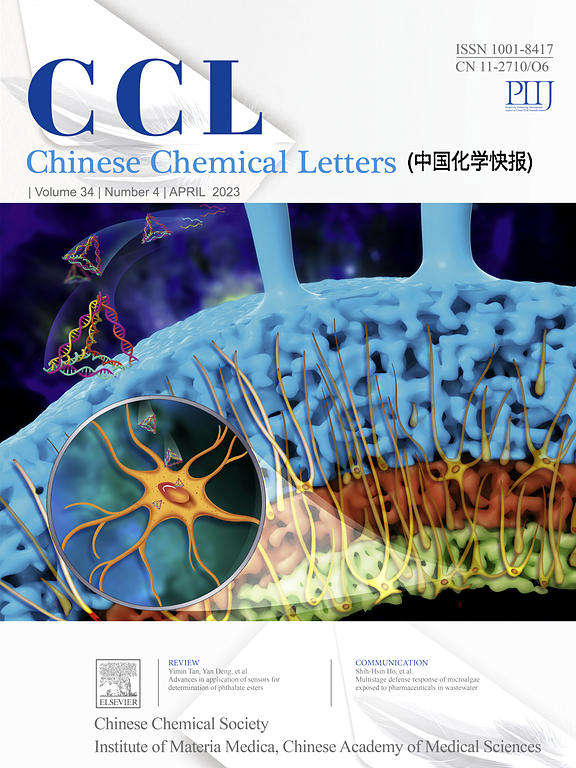Synthetic application of oxalate salts for visible-light-induced radical transformations
IF 8.9
1区 化学
Q1 CHEMISTRY, MULTIDISCIPLINARY
引用次数: 0
Abstract
Oxalic acid salts (oxalate) were recently developed as C1 synthon, potent single-electron-transfer (SET) reductant, and hole scavengers via generation of CO2 and CO2 radical anion (CO2•−) under mild photochemical conditions. A series of challenging reductive transformations were realized with oxalic dianion under catalytic photoredox conditions or through an electron-donor-acceptor (EDA) complex formation process. As a chemical intermediate for carbon capture and utilization (also a cheap and readily available reagent), oxalate salts could release one electron easily (Eox = +0.06 V vs. SCE) via visible-light irradiation to give CO2 and CO2•− and therefore opened a new arena for reductive carboxylation reactions with highly expanded reaction diversity and chemical space to realize challenging C-X bond activation, alkenes cross coupling, and reductive carboxylation of unsaturated chemical bonds in a more sustainable and efficient way. This review features the recently developed aspects with oxalate salts and also an outlook for its further application in organic radical transformations.

草酸盐在可见光诱导自由基转化中的合成与应用
草酸盐(草酸盐)是近年来发展起来的C1合成物、强效的单电子转移(SET)还原剂和在温和光化学条件下通过产生CO2和CO2自由基阴离子(CO2•−)的空穴清除剂。在催化光氧化还原条件下或通过电子供体-受体(EDA)络合物形成过程实现了一系列具有挑战性的还原转化。草酸盐作为碳捕获和利用的化学中间体(也是一种廉价易得的试剂),可以通过可见光照射轻松释放一个电子(Eox = +0.06 V vs. SCE)生成CO2和CO2•−,从而为还原性羧化反应开辟了一个新的领域,具有高度扩展的反应多样性和化学空间,实现具有挑战性的C-X键活化、烯烃交叉偶联、和不饱和化学键的还原羧基化,以更可持续和有效的方式。本文综述了草酸盐的最新研究进展,并对其在有机自由基转化中的进一步应用进行了展望。
本文章由计算机程序翻译,如有差异,请以英文原文为准。
求助全文
约1分钟内获得全文
求助全文
来源期刊

Chinese Chemical Letters
化学-化学综合
CiteScore
14.10
自引率
15.40%
发文量
8969
审稿时长
1.6 months
期刊介绍:
Chinese Chemical Letters (CCL) (ISSN 1001-8417) was founded in July 1990. The journal publishes preliminary accounts in the whole field of chemistry, including inorganic chemistry, organic chemistry, analytical chemistry, physical chemistry, polymer chemistry, applied chemistry, etc.Chinese Chemical Letters does not accept articles previously published or scheduled to be published. To verify originality, your article may be checked by the originality detection service CrossCheck.
 求助内容:
求助内容: 应助结果提醒方式:
应助结果提醒方式:


